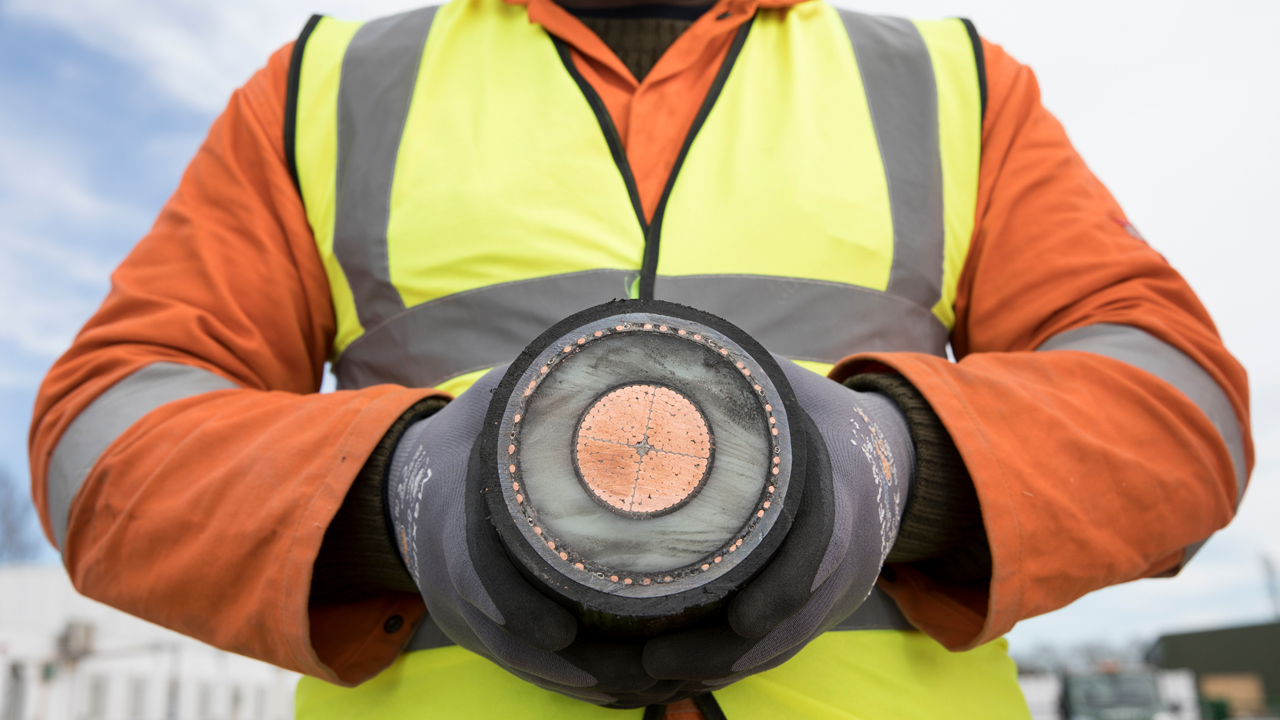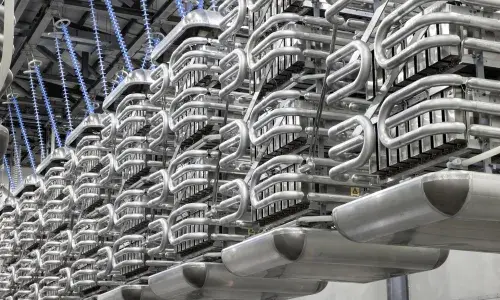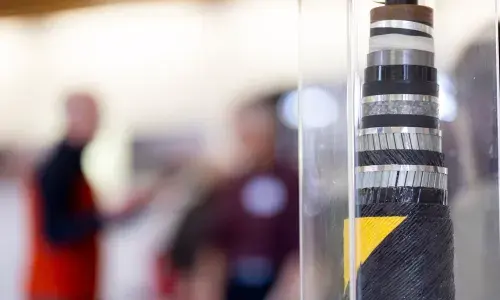
LionLink interconnector announces Walberswick as preferred landfall location
- Shorter route to Walberswick will lower the overall environmental impact of the project and reduce disruption to residents.
- Underground cable: no construction will take place on Walberswick beach and there will be no visible infrastructure left on the beach or shoreline once works are complete.
- LionLink will strengthen the UK’s energy security and lower household bills.
Today (Wednesday 19 February), LionLink interconnector announces Walberswick as the preferred landfall location for the new subsea interconnector between the UK and the Netherlands*.
Why Walberswick?
The decision to select Walberswick as the preferred landfall location follows extensive environmental and technical analysis and two community consultations. Key reasons for this choice include**:
- Lower environmental impact: The overall environmental impact of the project will be less at Walberswick. Fewer heritage trees, hedgerows and waterways will be affected by the route.
- Reduced disruption for residents: The shorter route will reduce traffic disruption. By using existing farm tracks for access, local roads can be avoided to minimise the impact on Walberswick.
- Sustainability: Walberswick is less susceptible to coastal erosion and flooding, making it a more sustainable option for the long-term operation of LionLink.
- Shorter onshore cable route: The Walberswick site requires a shorter onshore cable route (19.9 km) compared to the Southwold route (32.8 km). This will reduce the environmental impact and disruption to residents.
Ben Wilson, President of National Grid Ventures, said: “After two rounds of community consultation and detailed technical and environmental assessments, we have selected Walberswick as our preferred landfall site for LionLink. Community feedback has been essential to the evolution of LionLink. We have carefully chosen Walberswick for its shorter cable route, which will minimise disruption and environmental impact. Our commitment is to respect and protect the local environment and community, while we deliver a nationally important energy project that will strengthen the UK’s energy security.
"We understand that people may have questions about the impact of this decision on their community. We are dedicated to engaging with residents, addressing their concerns, and providing clear information about how we will minimise disruption to their daily lives and the natural environment when we build this project. We look forward to hearing their views at the next public consultation at the end of the year.”
LionLink is a vital first step towards an integrated North Sea Grid. It will be the first time that an interconnector links to an offshore windfarm at scale as well as enabling the transfer of energy between the UK and Dutch electricity grids. This means fewer connections from the sea to the land and less impact on coastal communities.
LionLink will bring renewable offshore wind energy to the UK and connect the Dutch and UK energy grids, enhancing the UK’s energy security and lowering household bills. 84% of LionLink’s cable is offshore and all of the onshore cable will be buried underground.
Benefits of LionLink
- Strengthening energy security: LionLink will power approximately 2.5 million homes.
- Lowering energy bills: LionLink will save consumers £300 million in its first ten years of operation.
- Environmental impact: LionLink will reduce carbon emissions equivalent to removing 600,000 cars from the road in its first year.
Next steps
- Community drop-ins: in March, LionLink is running two community drop ins and an online webinar for local people to find out more about the landfall decision and the next steps of the project.***
- Consultation: LionLink’s statutory consultation will happen in Autumn/Winter 2025. This will provide local people with details on LionLink’s final proposals, environmental findings, and community benefits. This is the next opportunity for people to feedback on our plans.
- Development Consent Order (DCO): LionLink expects to submit its DCO to the Planning Inspectorate (PINS) in 2026. A decision on the application is expected in 2027
- Operation: LionLink expects to be in operation from 2032.
Notes to editors
*What is a landfall location?
A landfall site is the location where the subsea cables are brought onto the land underground and are connected to onshore underground cables. No construction will take place on Walberswick beach and there will be no visible infrastructure left on the beach or shoreline.
**Landfall selection process
LionLink’s selection of the Walberswick landfall site has involved a comprehensive, multi-step process.
Initial site feasibility (2018-2022)
- Identified potential onshore infrastructure locations considering environmental and technical factors.
- Resulted in a shortlist of viable landfall sites for further study.
First public consultation (late 2022)
- Consulted on initial siting and routing options, including Walberswick, Southwold, Aldeburgh, and Dunwich.
- Community feedback led to identifying Walberswick (G2) as an alternative landfall site and a new cable corridor north of Southwold.
Second public consultation (late 2023)
- Focused on the alternative Walberswick site (G2) and Southwold cable route, along with 2022 options.
Shortlisted locations announced (March 2024)
- Walberswick and Southwold announced as preferred shortlisted locations.
- Non-Statutory Consultation Report summarising feedback and emerging preferences published.
Seabed surveys (Spring/Summer 2024)
- Conducted surveys off Walberswick and Southwold to assess offshore routes to the Dutch wind farm.
Ground Investigation surveys (Summer/Autumn 2024)
- Carried out surveys along the proposed cable route to Walberswick and Southwold landfall sites.
Preferred Option Selection (February 2025)
- Walberswick selected as the preferred landfall site after thorough evaluation.
***LionLink will be hosting a series of community drop-ins and a webinar. These are not consultation events, but an opportunity to learn more about the project and meet LionLink’s team of experts ahead of our formal statutory consultation expected to take place in Autumn/Winter 2025. This consultation is the next opportunity the community will have to feedback on the plans for LionLink.
| Event Type | Date | Time | Location/Access |
| In-person drop in | 14 March 2025 | 14:00 – 20:00 | Saxmundham Market Hall |
| In-person drop in | 15 March 2025 | 10:00 – 16:00 | Walberswick Village Hall |
| Webinar | 19 March 2025 | 18:00 – 19:30 | Register via the website (see below) |
People can register to attend the webinar here: nationalgrid.com/lionlink
For media enquiries contact:
Tom Dooks
07701 276607
About LionLink
National Grid Ventures (NGV) is developing plans to build LionLink, a new subsea cable (known as an interconnector) between the UK and the Netherlands. LionLink will bring offshore wind energy to the UK by connecting to a Dutch offshore wind farm, it will also enable the flow of energy between the UK and Dutch electricity systems.
LionLink will add enough energy to the UK’s electricity grid to power c.2.5million homes. It will help lower household energy bills down and provide the UK with a secure and reliable energy supply.
About National Grid Ventures
National Grid Ventures operates outside of National Grid’s core regulated businesses in the UK and US where it develops, operates and invests in energy projects, technologies and partnerships to accelerate the development of our clean energy future.
National Grid Ventures operates a diverse portfolio of energy assets across the UK and US, including subsea electricity interconnectors, competitive transmission, wind and solar generation, battery storage and LNG storage and regasification.


